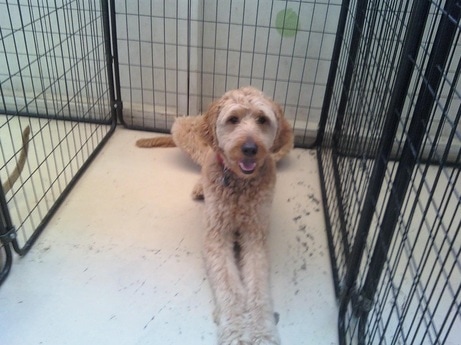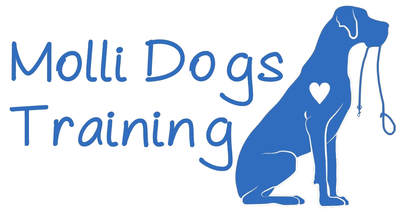Kennel/Crate Training

Kennel training is very important for dogs because they often tend to feel comfortable and safe in small, dark areas. For this reason, I recommend airline-type kennels, but if you have a wire crate you can cover it with a blanket for that “den like” feel. The kennel should be a special place where your dog can relax, feel safe, and most importantly, NEVER be bothered or pestered. This is the off-limits zone. The kennel can also be used for transportation, nap times, time-out when the dog needs to calm down, and as a safe place for him to go when he cannot be supervised. If a dog is frequently “forced” to use his kennel, if it becomes over associated with punishment, or if it is overused (i.e. he is kept in it for 8+ hours a day while you are at work), you may easily end up with a dog that never wants to go in it.
Understandably, a dog may have a difficult time getting used to a new kennel. There will likely be times you have to place your dog in his kennel when he doesn't want to be in it. But the ultimate goal is to create a positive association and a relaxing sanctuary.
Here are some tips that can help with the whole kennel training process:
Understandably, a dog may have a difficult time getting used to a new kennel. There will likely be times you have to place your dog in his kennel when he doesn't want to be in it. But the ultimate goal is to create a positive association and a relaxing sanctuary.
Here are some tips that can help with the whole kennel training process:
- Keep the kennel in a well-trafficked but quiet area, such as the kitchen or a corner of the living room, so the dog doesn't feel excluded from the family. Keeping the kennel in a room where no one goes very often, such as the laundry room, can cause your dog to feel banished and he will be less likely to want to go there.
- Keep the door open in the beginning whenever it is not being used and allow the dog to enter and exit as he chooses.
- Keep his favorite toys in his kennel so if he wants one he has to go in to get it.
- Provide a very special toy or chew (like a Kong filled with cheese or peanut butter, a tendon, or bully stick,etc.) to keep him entertained when you have to lock him in for extended periods of time. He should only get these special toys and chews when he is in his kennel. He shouldn't get them at any other time. This will help make him want to go to the kennel so that he can get these special things.
- Feed your dog his meals in his kennel.
- Praise and reward your dog for calm behavior in the kennel.
- Do not reward the dog when you let him out of the crate. This can be things as simple as excited talking, petting, and praise. If the dog is rewarded for coming out of the crate, he won’t want to stay in it. You should always treat coming out of the crate like it's the most boring thing in the world. Sometimes ignoring your dog for the first few minutes after he has come out can be helpful.
- For the dog to be ready to be in the crate for an extended period of time he should be properly exercised (tired), have a nice special chew toy, and have an empty bladder.
- Try giving the dog a fuzzy toy that is roughly the same size or larger than your dog. This can be especially useful for puppies when they are first learning how to sleep on their own without the comfort of their litter being there. Do not do this if your dog tries to eat or destroy the toy.
- Do not put the dog in the kennel for the night if the rest of the household is still up. This will just cause your dog to feel alienated and is a sure way to cause whining, crying, and barking.
- Never let a noisy dog out of a crate! Wait for at least 3-5 seconds of silence first! You don’t want the dog to learn that pitching a fit gets him out of the crate. Ignore him completely until you get that moment of quiet. Even just saying “No!” or looking at the dog is attention and is therefore rewarding to the dog.
- If your dog is having a hard time settling down throw a blanket or towel over the crate to completely cover it so that your dog won't be so stimulated by all of the sights going on outside of the crate.
- It is generally recommended that the crate should not be used as a punishment; however, it is fine to use the crate for “time outs” on occasion. It’s the same idea as sending a child to their room. As long as the punishment is not abused, the child still enjoys going into their room. It works the same way with dogs.
- It is not recommended for a dog to be in a crate for more than 4-6 hours a day. If this is not possible, getting an exercise pen or dog run, is recommended (these are not recommended for more than 8 hours a day). Personally, I prefer using a long term confinement area, such as blocking of the kitchen, if you will need to leave your dog for extended periods of time on a regular basis. If you need to have your dog crated or kenneled for extended periods of time (6 hours a day or more) on a regular basis, make sure the dog is getting ample exercise, mental stimulation and attention throughout the rest of the day or else your dog will likely start developing behavior problems such as chewing, digging, and other destructive behaviors.
